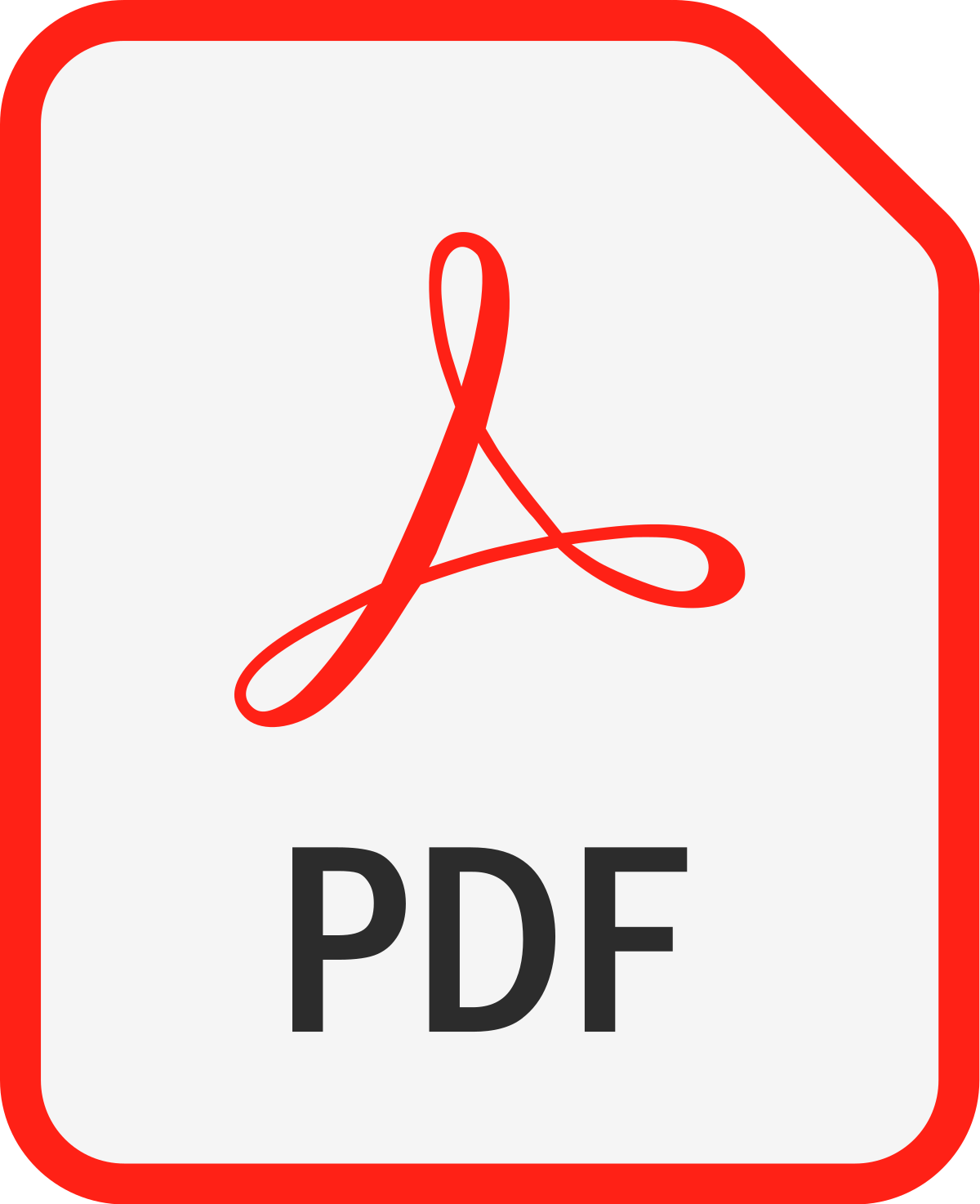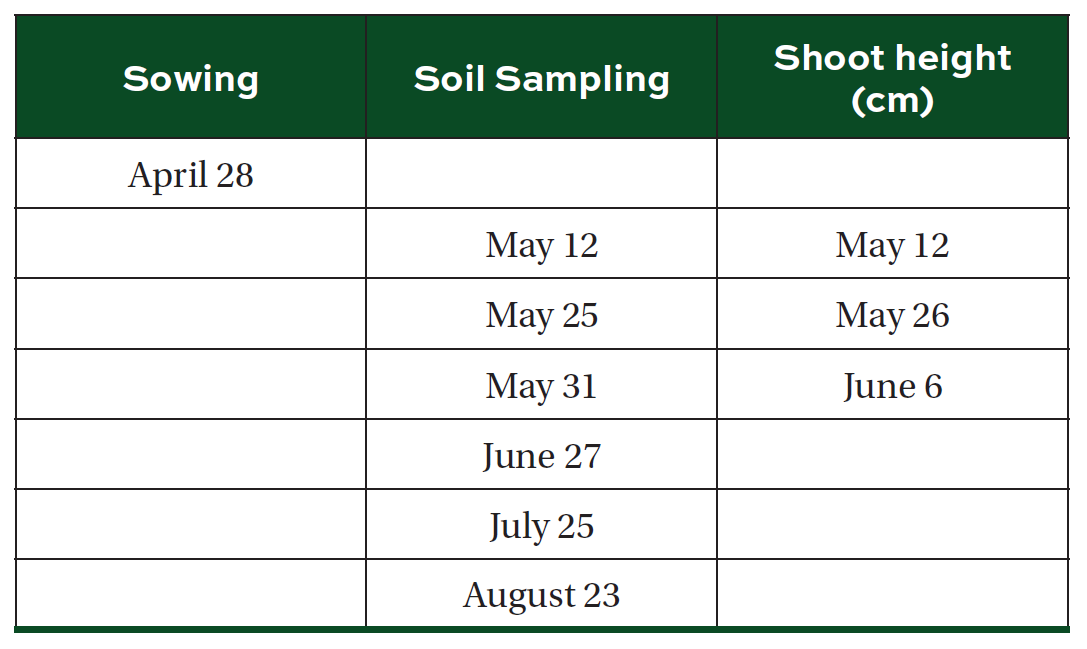Research Report 23-07 
Effects of Three Applications of a Non-Fumigant Nematicide (Fluopyram) on Nematode Control and on Loblolly and Slash Pine Seedling Characteristics: Third SFNMC Trial
Nina Payne, Annakay Newell, Gretchen Mitchell
Table 1. Dates in 2022 of activities related to Broadform™ trial at PRT/IFCO Jesup, Georgia Nursery.

Table 2. Nematode counts per 100 cc soil from bareroot loblolly pine seedbeds treated with fluopyram and trifloxystrobin (Broadform™) on May 12, May 26, and June 6, 2022, at PRT-IFCO Jesup, GA Nursery.

Table 3. Nematode counts per 100 cc soil from slash pine seedbeds treated with fluopyram and trifloxystrobin (Broadform™) on May 12, May 26, and June 6, 2022, at PRT-IFCO Jesup, GA Nursery.

Table 4. Bareroot loblolly pine seedling characteristics treated with fluopyram and trifloxystrobin (Broadform™) on May 12, May 26, and June 6, 2022, at PRT-IFCO Jesup, GA Nursery.

Table 5. Bareroot slash pine seedling characteristics treated with fluopyram and trifloxystrobin (Broadform™) on May 12, May 26, and June 6, 2022, at PRT-IFCO Jesup, GA Nursery.

Introduction
As the third trial in a series conducted by the Southern Forest Nursery Management Cooperative, this study was installed to test the effectiveness of a non-fumigant nematicide on nematode populations in bareroot pine seedling nurseries. Based on results of 2020 (Payne, et, al. 2021) and 2021 (Payne, et. al. 2022) trials, modifications were made to align product applications with operational nursery procedures, to utilize a different nursery location, and to add slash pine seedling beds to this third installation.
Each of these three trials conducted by the SFNMC tested Broadform™, a Bayer CropScience product developed as a fungicide. Its active ingredients are fluopyram (21.4%) and trifloxystrobin (21.4%). During its development as a fungicide, Bayer also found that the product controlled nematode populations when tested in golf course turf applications. Subsequently, the EPA issued an amended Broadform™ label, editing the label’s Product Information section by adding “and for the protection against damage caused by certain plant pathogenic nematodes.”
The decision to test a new pesticide in forestry seedling nurseries must consider potential seedling tolerance to or damage by the product. Predicting this tolerance prior to field testing in nurseries is often based on those crops and/or species listed on the product’s label. Neither loblolly pine (Pinus taeda), slash pine (Pinus elliotti), nor forestry seedling bareroot nurseries are listed on the Broadform™ label. However, similar growing sites and species are listed. These include “…field grown and container crops in nurseries and greenhouses…”, with Christmas trees listed in the Crop Disease Control Use Directions table.
The purpose of this third non-fumigant nematicide product trial was 1) to determine its effectiveness in controlling nematodes at a different location than previously tested, 2) to include a third round of testing for loblolly pine seedling tolerance, and 3) to test for tolerance by slash pine seedlings.
Methodology
After results of the two earlier SFNMC trials were available, participants in those trials suggested modifications to any subsequent installations. These were implemented in the 2022 trial and included the delayed initial product application until two weeks after sowing, then the scheduling of subsequent applications at two-week intervals.
The third installation was made at the PRT-IFCO Jesup, Georgia Nursery, sited on a loamy sand soil type. The presence of damaging nematodes has historically been a problem in certain portions of the nursery, with methyl bromide fumigation providing less-than-desirable results of nematode control. The trial was located in one of these sections of the nursery which was fumigated in 2020. Two Broadform™ test installations were made, one in loblolly pine seedling beds and a second in slash pine seedling beds.
Four replications of treatment and control plots of 80 feet in length each, covering nine nursery beds, comprised the loblolly pine test, totaling a length of 640 feet. Three applications of 80-foot control and treated plots were established in nine slash pine beds, for a total length of 480 feet. These plots were larger than those typically included in pesticide product testing in bareroot seedling beds and are similar to those used in fumigant product testing. These plot lengths were utilized to better capture the presence or absence of nematode over large areas, taking into account the unpredictable nature of nematode activity and movement during the growing season.
In this third trial, each treated plot was sprayed with 9 ounces per acre of Broadform™ at 14 days after sowing, again at 28 days after sowing, and for a third time at 42 days after sowing. The maximum allowable application quantity specified on the Broadform™ label is 27.1 ounces per acre per year.
Prior to the first product application, soil samples were randomly taken in both the loblolly pine and slash pine seedbeds to quantify nematode populations early in the growing season. As seen in Table 1, five subsequent soil sample collections were taken, for a total of six soil sample collections. These samples were refrigerated and shipped to the Auburn University Plant Diagnostic Laboratory for nematode quantification and identification. Analyses showed the presence of spiral, stunt, and stubby root nematodes in samples collected at all dates.
At the end of the growing season, seedling samples from each plot were collected by the nursery staff and shipped to the SFNMC lab in Auburn, Alabama for processing. Counts of seedlings within each sampling frame were used to calculate density per square foot for each plot. Measurements of shoot height, root collar diameter, and root and shoot dry weights were made on sample seedlings from 8 plots in loblolly pine beds and 6 plots in slash pine beds. Data and analyses are shown in Tables 4 and 5. The analysis of significant differences between seedling characteristics measured from treated and non-treated control plots was conducted using R Statistical Software (v4.1.2; R Core Team 2021) with Tukey's Honest Significant Difference (HSD) post hoc test. A significance level at alpha = 0.05 was used for these comparisons.
Results
Nematode populations: There were no statistical differences at any sampling date between populations recorded in nontreatment control plots and treatment plots. Nematode counts varied widely by treatment and date of soil collection, with identified populations increasing gradually through the summer. In loblolly pine plots, populations in non-treated control plots ranged from a low of 11 per 100 cm3 of soil in late May, to a high of 388 per 100 cm3 of soil in August. Treatment plots in loblolly pine contained populations ranging from a low of 14 per 100 cm3 of soil in mid-May, to a high of 272 per 100 cm3 of soil in late July. In slash pine plots, counts from non-treated control plots ranged from a low of 51 per 100 cm3 in late May, to a high of 502 per 100 cm3 in late August. Treatment plots in slash pine had populations ranging from a low of 25 per 100 cm3 in late May, to a high of 563 per 100 cm3 in late August. Analyses of nematode counts are shown in Tables 2 and 3.
The presence of stubby root (Nanidorus minor) nematodes in soil samples taken during this trial may explain the continued appearance of nematode damage on pine seedling root systems at this nursery. This species is found typically deeper (8 to 16 inches deep) in sandy soils than other nematode species (Crowe, 2014), so may be less affected by methyl bromide fumigation applications. Its life cycle is also shorter than other nematode species, reproducing as often as every 16 days in warmer weather.
Loblolly pine seedling characteristics: As in the 2020 and 2021 trials with Broadform™, comparisons of measurements of loblolly pine seedling characteristics from treated and nontreated control plots showed either no differences or biologically insignificant statistical differences (Table 4).
Slash pine seedling characteristics: The 2022 trial was the first SFNMC study in which slash pine seedlings were treated with Broadform™. Results of measurements of seedlings showed statistically significant differences in two characteristics: shoot height and root collar diameter. Heights of seedling samples from nontreated control plots measured 2.7 centimeters longer than from those sampled from treated plots (Table 5). This difference is not biologically significant in bareroot pine seedling nurseries due to the operational practice of top clipping several times during the growing season. Root collar diameters of sample trees from nontreated control plots were 0.37 millimeters larger than those from treated plots. This quantity, too, is not biologically significant, as this amount represents less than 10% of the overall mean diameter. No differences were seen when comparing dry weights of shoots and roots from treated and nontreated plots.
Management Implications
Results of three years of trials of Broadform™ for nematode control in two pine seedling nurseries indicate its ineffectiveness in providing sufficient control in pine seedling beds to warrant further study or recommend its use. Searches for other non-fumigant nematicidal products should continue, with testing recommended as needs for control in certain nematode 'hot spot' areas of forestry seedling nurseries will continue.
Acknowledgements
The authors thank the staff at the PRT-IFCO Jesup, Georgia Nursery for their assistance in installing this trial, including field layout of plots, product applications, and timely soil collections.
References
Bayer. Broadform™ label. Retrieved from: https://www.environmentalscience.bayer.us/-/media/prfunitedstates/documents/resource-library/product-labels/specimen-labels/broadform-specimen-label.ashx
Crow, W. T. (2014) Featured Creatures: A Stubby-Root Nematode. Available at: https://entnemdept.ufl.edu/creatures/nematode/stubbyroot/paratrichodorus_minor.htm
Payne, N., E. Bowersock, T. Stokes and S. Enebak. (2021). The effect of multiple applications of fluopyram (Broadform™) on nematode control and loblolly pine seedling characteristics. Auburn University, Southern Forest Nursery Management Cooperative. Research Report 21-05:6p.
Payne, N., T. Stokes, and G. Bickerstaff. (2022). A second trial to determine the effect of multiple applications of a non-fumigant nematicide (fluopyram) on nematode control and loblolly pine seedling characteristics. Auburn University, Southern Forest Nursery Management Cooperative. Research Report 22-02:4p.




